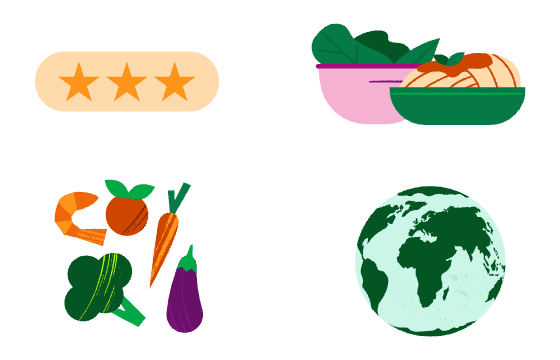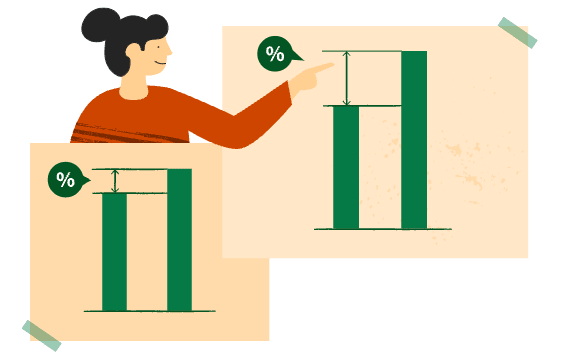Reduce your carbon footprint
How we reduce CO2 emissions
Renewable energy sources
In 2021, we sourced 100% of our organization’s electricity consumption from zero-emission renewable wind energy. Additionally, we’re covered by renewable energy certificates (RECs) whenever direct purchasing isn’t available.
Shorter supply chain
HelloFresh has fewer stops between the supplier and the customer, unlike traditional supermarkets. We also prioritize domestic suppliers and buy directly from the source to further reduce emissions.
Offsetting emissions
Since 2020, we’ve balanced all emissions from our internal operations, business travel, and box deliveries via carbon offsets. In 2021 alone, we offset 62 thousand tons of carbon emissions.
Always innovating
We’re constantly looking for new ways to innovate. Examples include retrofitting LEDs in older facilities, monitoring equipment to reduce electricity usage, and installing rooftop solar arrays where possible.
31% fewer carbon emissions than the supermarket
Subscribing to HelloFresh reduces your carbon footprint by 31% compared to cooking with the same ingredients from a supermarket. Read more about how we got our data in the life cycle assessment below.
The HelloFresh journey
Fewer stops in the supply chain reduce our carbon footprint and environmental impact.

The standard journey
Typical supermarkets have longer supply chains, meaning more vehicles and more CO2 emissions.


Life Cycle Analysis
Our methodologyIn April 2022, we finalized a life cycle assessment (LCA) to examine the end-to-end life cycle footprint of our meal kits. The study followed the ISO 14040 International Standard for conducting LCAs, including a critical review by a panel of experts. We commissioned Quantis, a third-party sustainability consultancy, to perform the LCA.

Life Cycle Analysis
Criteria for the analysisFirst, we ensured the chosen meals met 4 criteria.They included:
1. HelloFresh’s most popular meals
2. Meals that you can reasonably expect to get from restaurant take-away
3. Recipes that include food readily available at a traditional supermarket—so no proprietary ingredients
4. Meals that are similar across markets
Some examples of the meals were burgers, chicken breast with a starch and vegetables, and a vegetarian pasta dish.

Life Cycle Analysis
How we calculate the resultsTo get an average baseline weight for each meal kit, we considered both the weight of the packaging and box sizes. Then, we determined the carbon output of each meal in kgCO2e, along with other impact categories like land-use change.
We also looked at the packaging, transport, and waste of HelloFresh versus a typical supermarket. The results? On average, the carbon emissions of our meals were 4% fewer compared to restaurant delivery and 31% fewer compared to supermarkets , indicating a lower impact on climate change.
Want to dive into the details of the study for yourself? Check out the 2022 life cycle assessment.